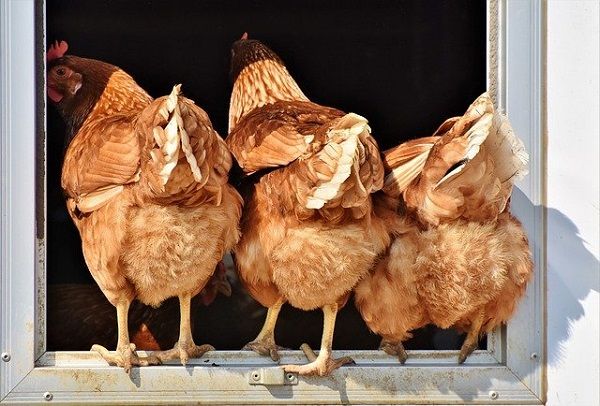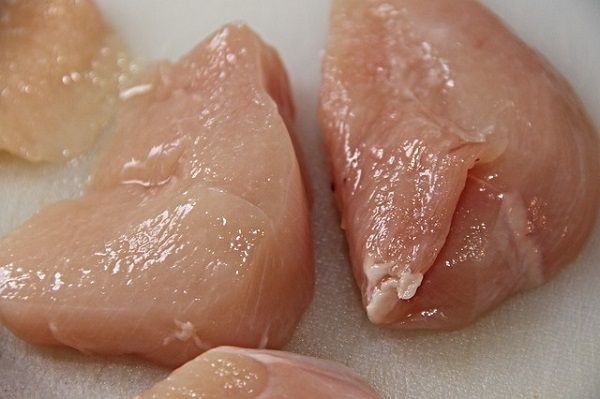What Kind Of Chicken Is A Capon?



Who knew that there was more than one type of chicken? If you've stumbled upon our article, chances are that you've just heard the term 'Capon' and you're wondering what exactly that means.
Well, don't worry -- we're about to tell you all about the infamous Capon chicken. So, buckle up -- we're in for a ride with this one.
Birds are fascinating creatures that come in all shapes and sizes, but chickens are one of the most commonly kept birds.
Whether it be for food or fun, keeping chickens in your backyard is always an entertaining experience.
If you haven't done so already, we highly recommend that you go somewhere just to watch chickens play around for a while.
The experience is unmatched in relaxation and entertainment. But Capon chickens are somewhat of a question mark when it comes to whether or not we should support the idea.
There are plenty of people against the practice and some that are for it. We hope that you'll be able to make an informed decision on where you stand after reading our article.
Let's get right into the world of Capon chickens, what kind of chicken is a capon and they're all about, shall we?
An Introduction to Caponizing Chickens
A Capon chicken is a male chicken that no longer has their testes, either by castration or gelding.
Once the testes have been removed, the chicken is fed a diet of oats and milk so that they grow larger and faster than normal chickens. Capons are usually closer to the size of turkeys than chickens.
Capon chickens are also supposedly richer in flavor than normal chickens. Many people think that they have more meat which is thicker, fuller, and more flavorful than chickens that have been raised on a usual diet of grasses and grains.
The texture also changes between normal chickens and Capon chickens. This is partly down to the castration as well as the higher fat percentage on their bodies.
Removing the testes removes the sec hormone in the chicken, which creates a more buttery texture on the muscles. This is highly desired by a lot of meat-eaters.
The lack of testes also effects how boisterous the chicken is and you'll see a great reduction in how many fights these chickens get into compared to chickens with their sex organs intact.
It's worth noting that you'll see the greatest change in their personality if you remove the testes before they reach sexual maturity.
As Capons are more docile than regular roosters, they can be kept together in a pen without any issues.
As their entire life is eating to get fatter, they don't tend to do much throughout the days, so they're not the most entertaining birds. However, their lack of energy also contributes to the tenderness of the meat.
History of Capon Chickens

Now, when you're part of a conversation that involves Capon chickens, what kind of chicken is a Capon is no longer a question (not for you!).
The thing is you might be wondering how they ever came about.
Who had the initial idea to cut off a chicken's testes to make them taste better? We don't know about you, but we don't spend a lot of our time thinking about how castration can enhance our dinner plates.
Anyway, obviously, someone did have the idea and put it into practice to give us the infamous Capon chicken. So, where did it come from? The term 'Capon' comes from the Latin word 'capo' which translates to 'cut'. So a Capon chicken is simply a cut chicken. Makes sense, right?
Capon chicken is believed to be first used in Asia as early as 4000BC, but there is not a lot of evidence to support this finding.
However, there is a lot of evidence that Capon chickens were used and popularized by the Roman Empire, with the Romans castrating young chickens to ensure that they grew up fattier.
Once the idea of caponizing chickens was out, almost everyone started doing it to get the most of their livestock. Female chickens were also fattened as well but this was only done by feeding them more grain as they lacked the vital part for castration -- the testes.
However, the act of fattening hens became illegal soon thereafter as it was considered a waste of resources.
Moving through the Middle Ages, Capon chickens were mainly consumed by royalty and noblemen. The practice spread throughout Europe and they were cooked up for feasts, popular methods being stuffed, roasted, or made into pies.
Many people, to this day, still feast on Capon chickens during Christmas and thanksgiving time.
However, as more people started looking into what kind of chicken is a Capon, it meant for a chicken to be considered caponized, they began turning away from the practice as they deemed it unethical and unnecessary pain for the chickens.
While you can still purchase Capon chickens, they are much less commonly sourced than in the Middle Ages.
Caponizing Chickens
If you're thinking about caponizing your own male chickens or are simply interested in the method behind it, keep reading to learn more about how it's done.
However, we will warn you that some potentially disturbing images are about to be described.
Equipment
Before you begin caponizing your chickens, you'll need to find a high-quality caponizing kit. These are kits of instruments that can be used to quickly and efficiently remove the testes from your chickens.
However, you can also use a pair of tweezers and forceps if you don't want to pay for an entire kit.
In the past, people used horsehair and straws to remove the testes so some tweezers and forceps are a big step up.
Another popular method in the past was to cut a V shape out of your fingernail and use it to rip out the testes. Please don't follow this method; however, as it can seriously harm your birds.
The Day Before
Make sure that your chicken does not eat or drink anything for 24 hours before you plan to remove their testes. This ensures that there is no bloating around the area so that you can see much more clearly.
Withholding food and water will also weaken the bird to prevent them from fighting back during the caponizing process.
The Day Of
You'll need to restrain the bird in some way so that you can perform the procedure in as little time as possible. You can string the wings together so that they cannot move.
Now that they're restrained on their backs, make a small incision between the two bottom ribs. You can open up the ribs slightly to view the testes.
Remove the hidden teste before the one at the forefront. This has been shown to prevent excessive bleeding.
Be careful not to touch the artery that runs along the spine as if this is punctured you might not be able to save your chicken.
The Ethics of it All
Caponizing a chicken is a common procedure that almost never uses anesthetic or painkillers.
Scientists have proven that birds can feel pain, so the process of castrating them in the method that we just detailed is undoubtedly a very painful experience for your chicken.
After the surgery, there are no painkillers given to help the chicken heal. Many untrained people conduct this procedure, making the risk of complications all the more likely as well. Quite a lot of people trying to create their own Capon chickens do so by a trial and error procedure.
This means that they take multiple chickens and try to remove the kinks of their caponizing method one after the other.
We think that it goes without saying that this would never be allowed to be done on humans, so why is it okay to do on conscious chickens that are able to feel pain?
The Humane Society of the United States has completed a report on the welfare issues of caponizing chickens, and this can be read online by clicking on this link here.
Ultimately, what kind of chicken is a Capon is one thing, it's up to you to decide whether you think caponizing chickens is ethical or not.
Some people believe that humans take reign over animals and therefore they should be treated in any way to aid the human race, but others agree with the HSUS that it is 'undoubtedly a serious welfare concern.'
When Capon chickens were first introduced from the Romans, we could understand why more meat was necessary to feed more people. However, with as many alternatives as we have nowadays, we believe that there are more humane ways to enjoy meat.
What Does Capon Chicken Taste Like?
Capon meat tastes much more flavorful than chicken and turkey, and the meat is considered to be juicer and tender and other poultry.
Some lovers of Capon meat consider it to taste more like game meat than poultry, which is an interesting experience for people who have never tasted it.
This is one of the reasons why Capon meat is still sought after as they can taste the rich meat that noblemen and royalty used to feast on from 500 to 1500 AD.
The higher fat percentage keeps the meat moist and juicy which prevents you from being left with dry meat from overcooking it.
This is another reason why Capon meat is popular as people tend to dry out normal chicken -- a feat that is almost impossible to do with a Capon chicken. The fat surrounding the muscles also gives it a buttery texture which can be enjoyed by meat lovers everywhere.
Cooking Capon Meat

There are plenty of recipes for cooking your Capon chicken, and a simple internet search will provide you with endless possibilities on how to cook the meat.
Capon chickens are often very large and therefore they'll feed a lot of people, so make sure that you don't cook too much of the meat at once to prevent wasting it.
Perhaps the most common way to cook Capon meat is to roast it just as you would a normal chicken or a turkey. However, make sure that you take the time into consideration as they will often take longer to fully cook than smaller chickens.
As a generalized rule of thumb, you should cook Capon meat for 17 minutes for every pound of chicken, so make sure that you weigh your Capon before cooking it.
That being said, this isn't always an accurate method of cooking your chicken so don't trust this blindly.
Instead, make sure that you have a meat thermometer handy so that you can poke the chicken to see whether it's ready to eat or not. Stick the thermometer into the thigh of the Capon chicken and wait for it to solidify the reading.
A reading of 165-degrees is the correct internal temperature to know that it's cooked thoroughly.
Finding Capon Meat Near You
Depending on how large or small your local food store is, you can often find Capon chickens in the poultry section around the other normal chickens and turkeys.
However, as Capon meat is not as commonly eaten nowadays it is not always stocked up regularly. This means that you should always check the expiry date on the chicken before purchasing it to avoid becoming ill after eating it.
If your local supermarket does not stock Capon chicken, you can most likely find it in a butcher around your area. They will often cost more from butchers and only be stocked in larger butchers, but the quality might be better than the supermarket's offerings.
Summary
That concludes our article on Capon chickens. We hope that you now know the answer to the question: what kind of chicken is a Capon?
In short, it is a male chicken that has been castrated and fed a dense diet to fatten them up before being eaten. The Roman Empire made caponizing a popular form of raising meat, but there have since been many studies highlighting the unethical side of it.
Capon chicken is more flavorful than normal chicken and it is also juicier and more tender. It offers a higher fat content which gives it a smooth texture that melts in the mouth.
The most common method of cooking the meat is to roast it, and roasted Capon has been eaten by kings, queens, and noblemen since the Middle Ages. It is not as widely available as it used to be, but some large stores and butchers do still stock it.

